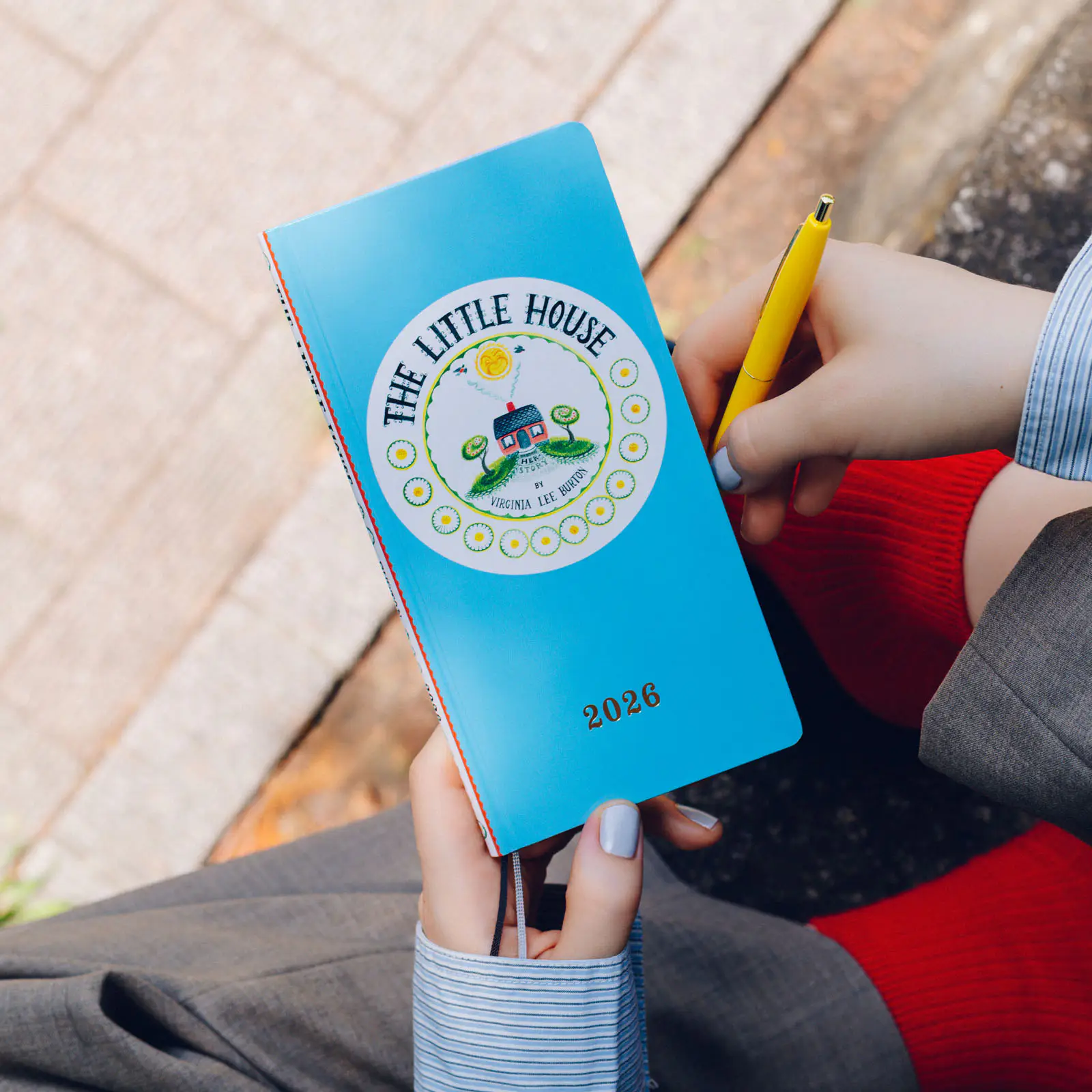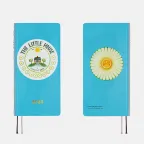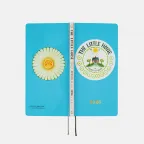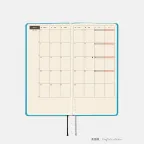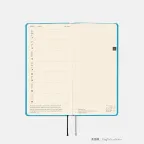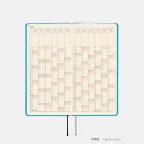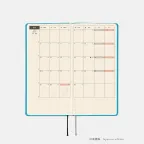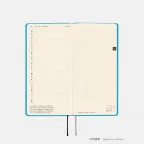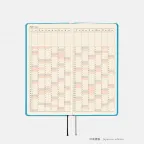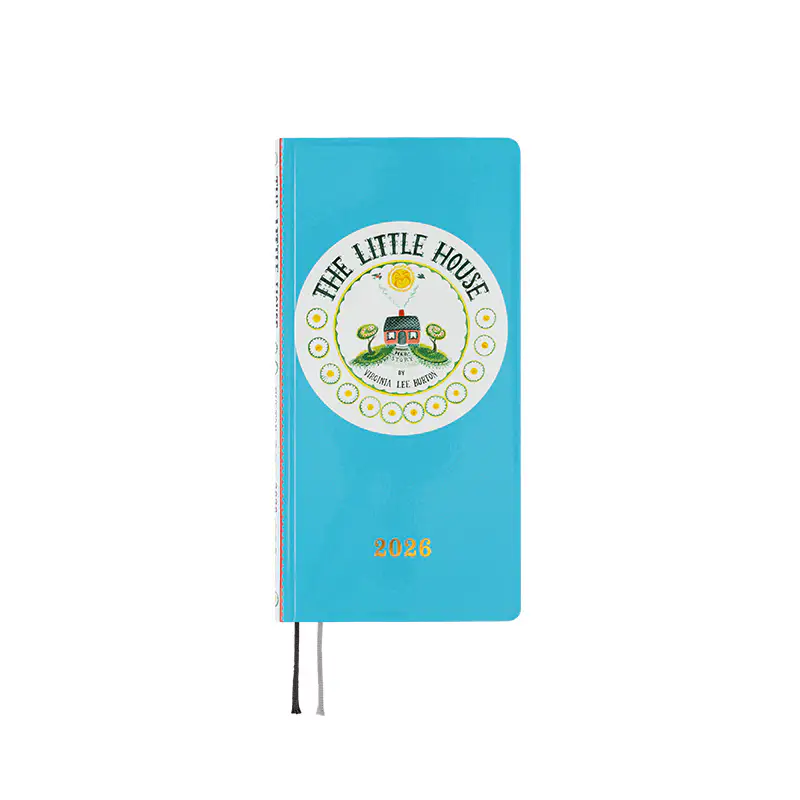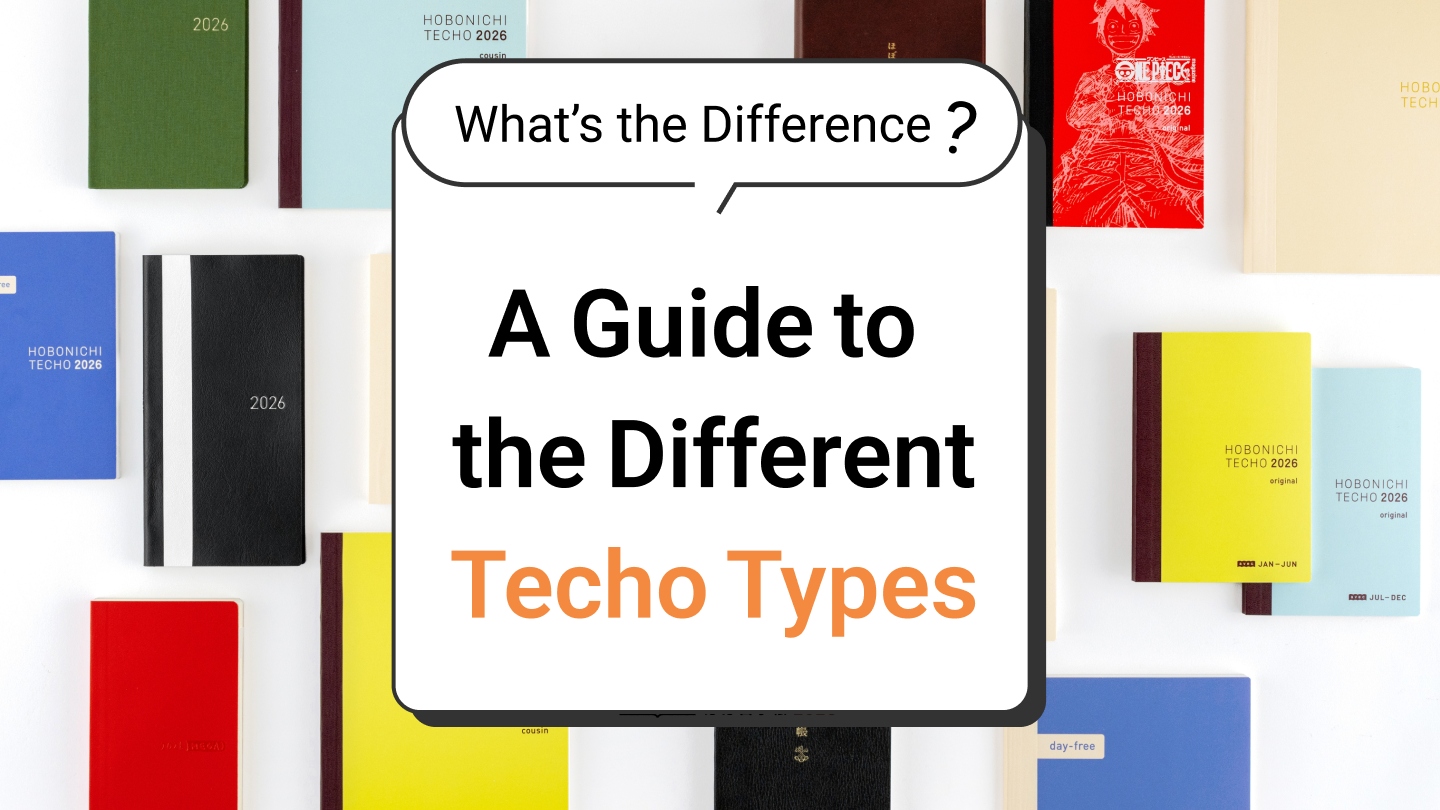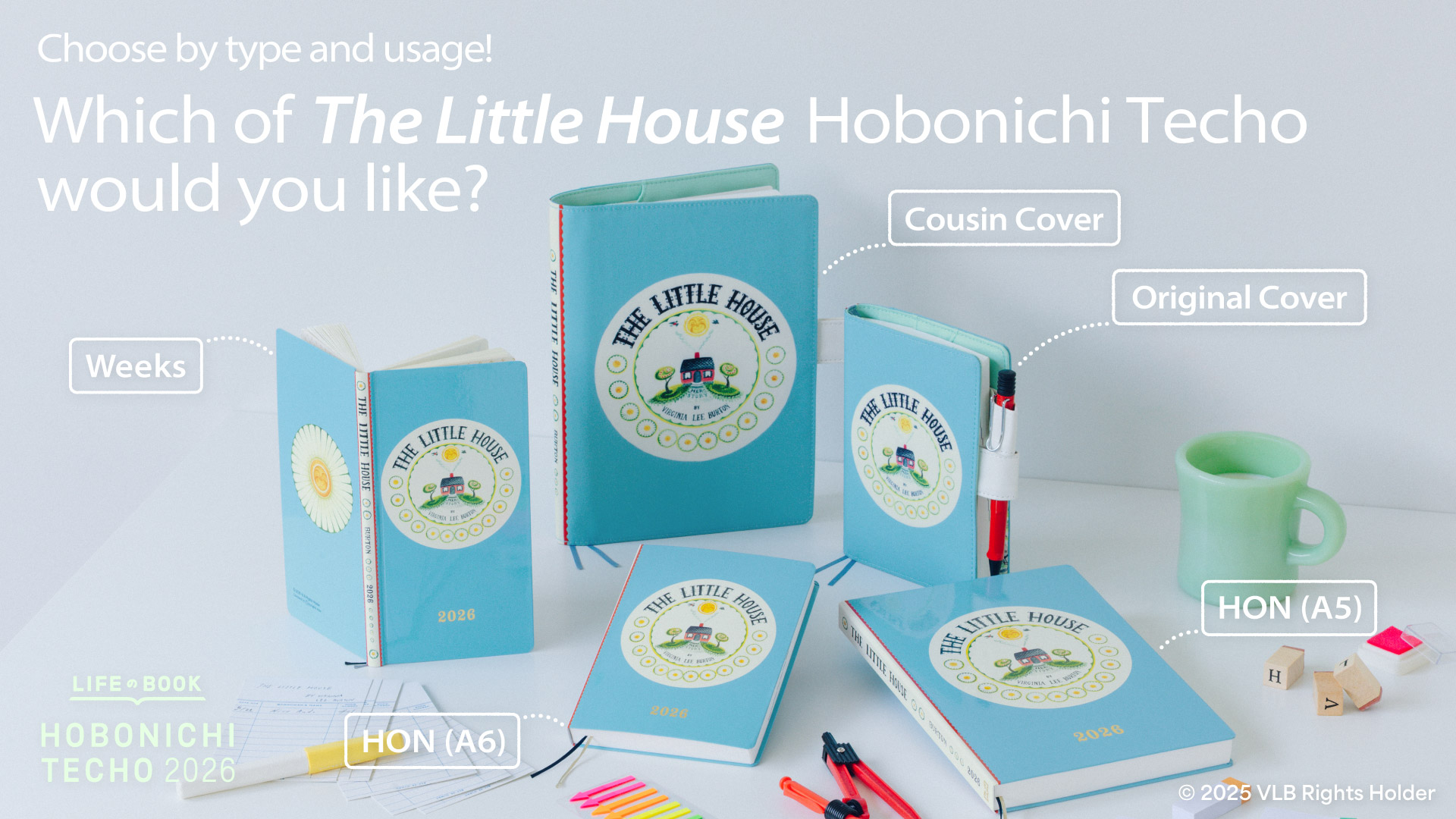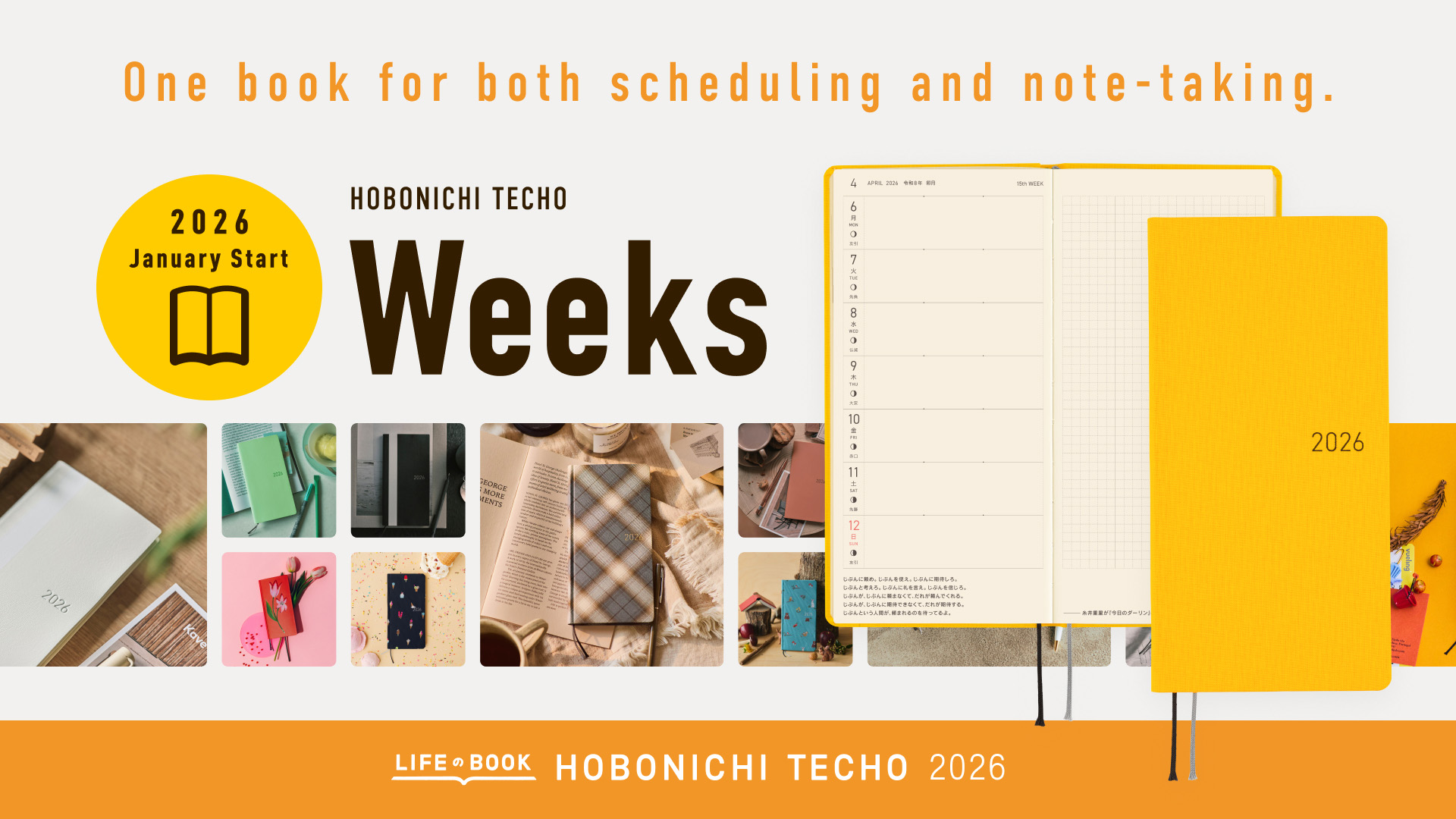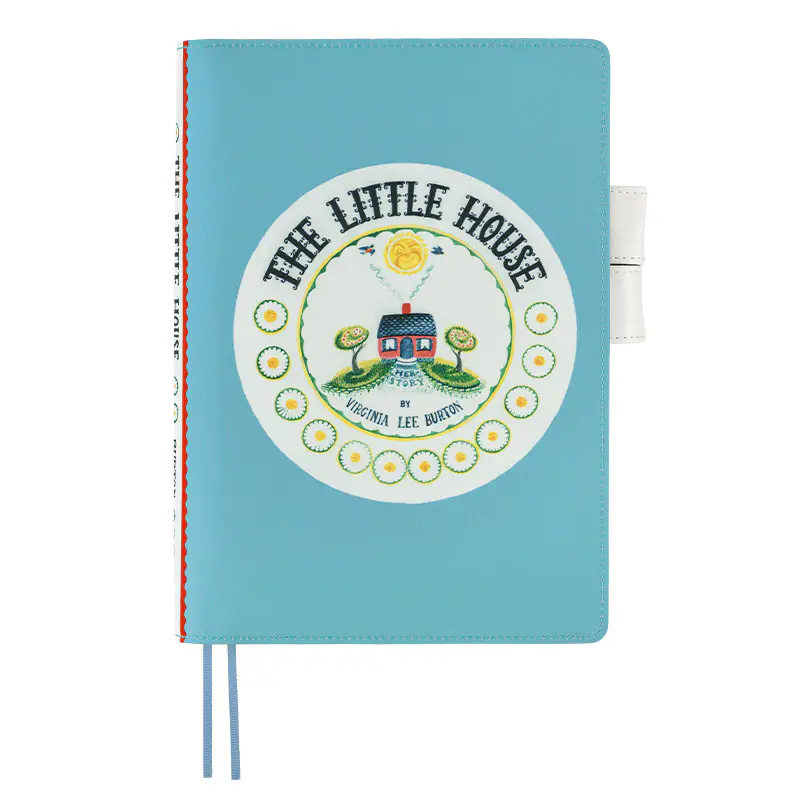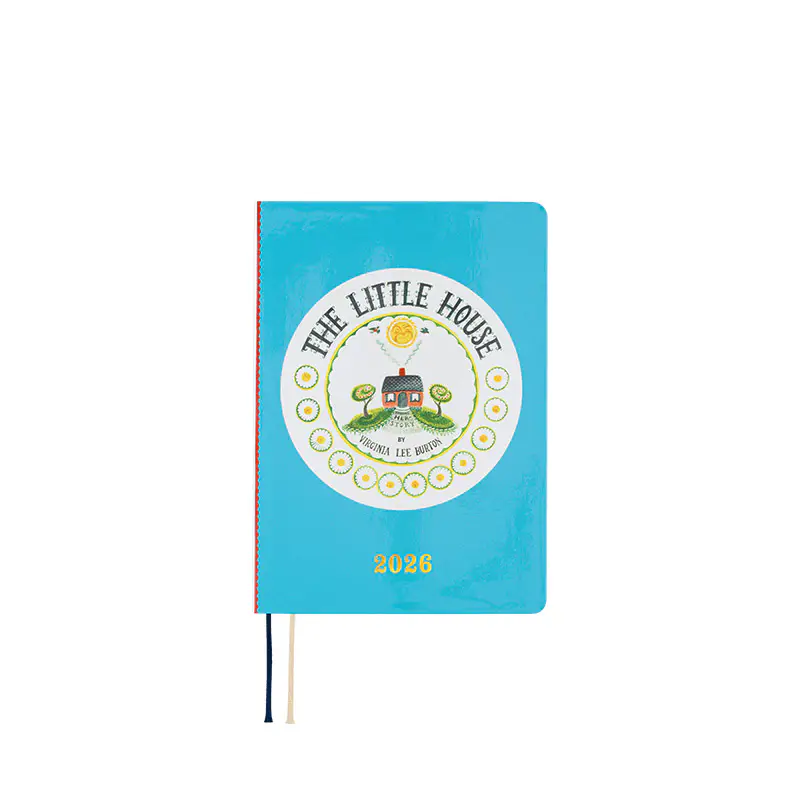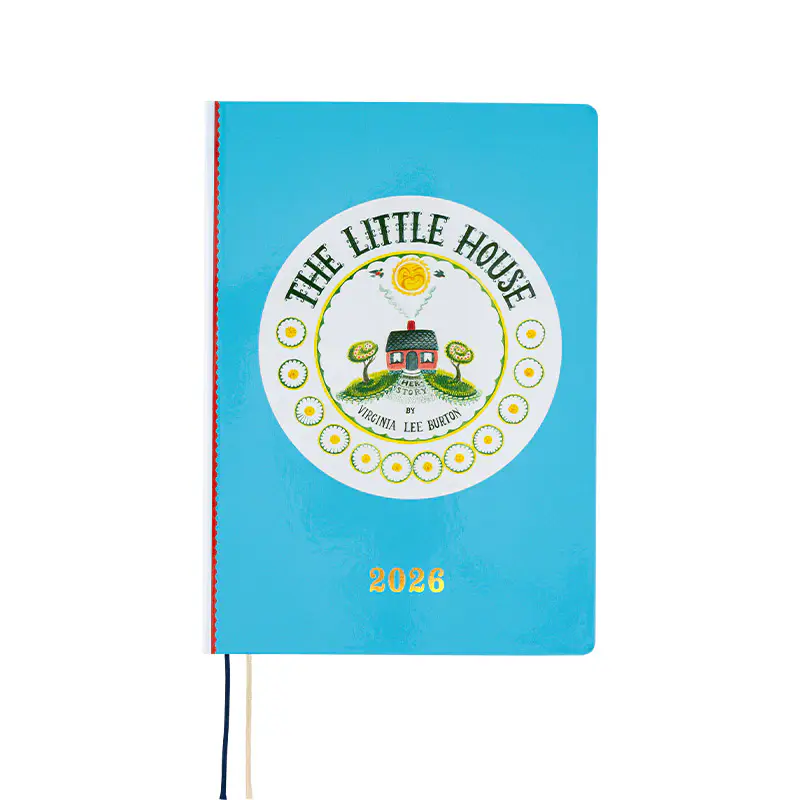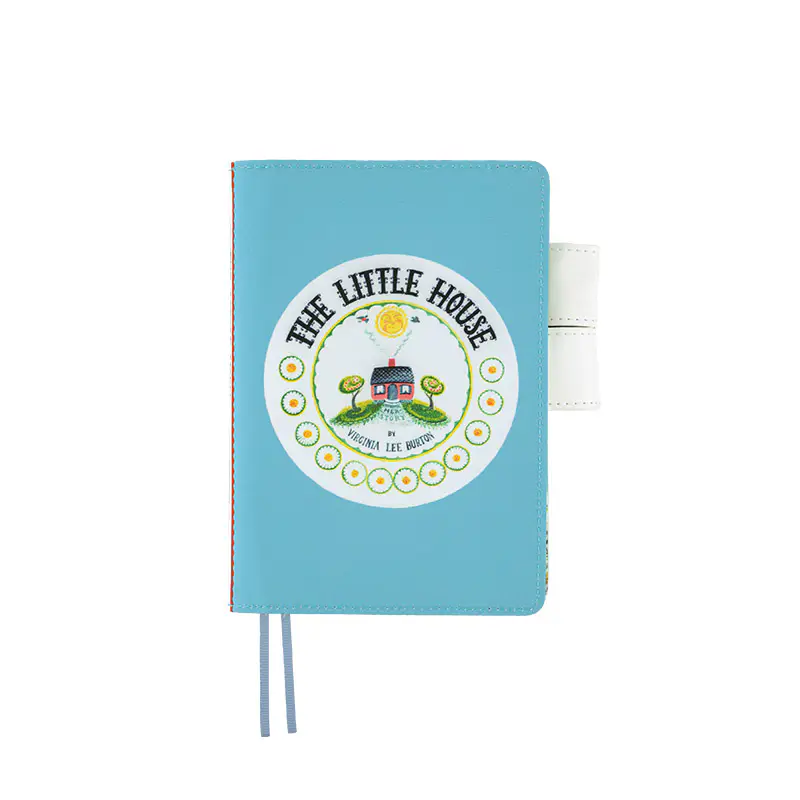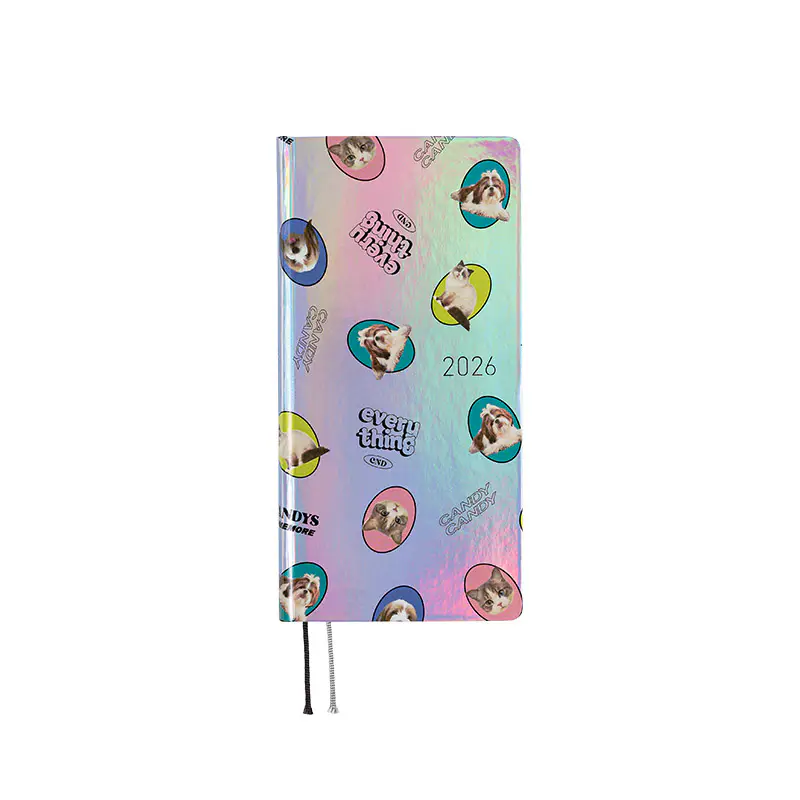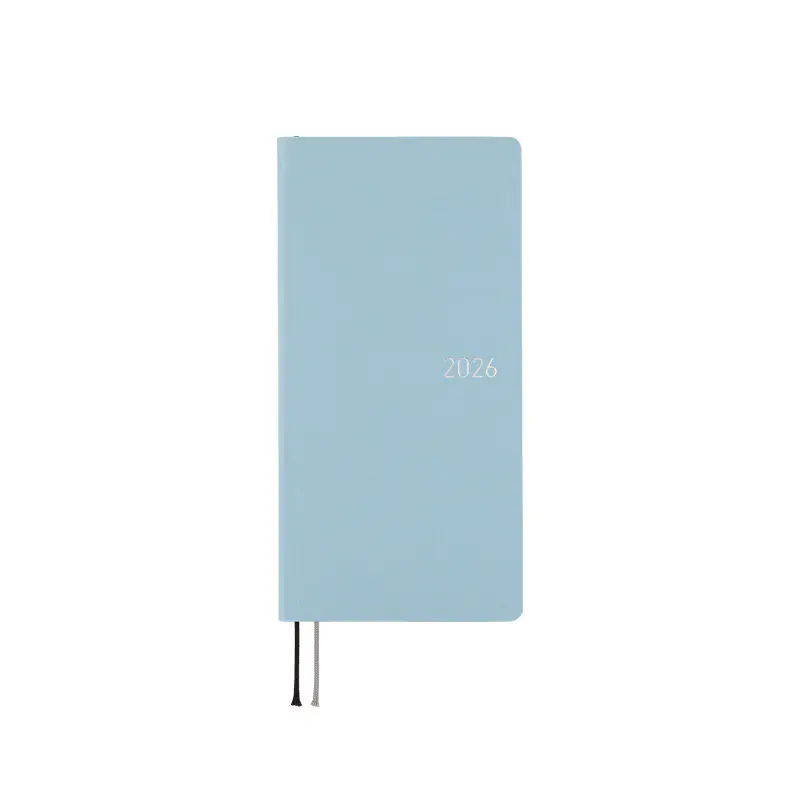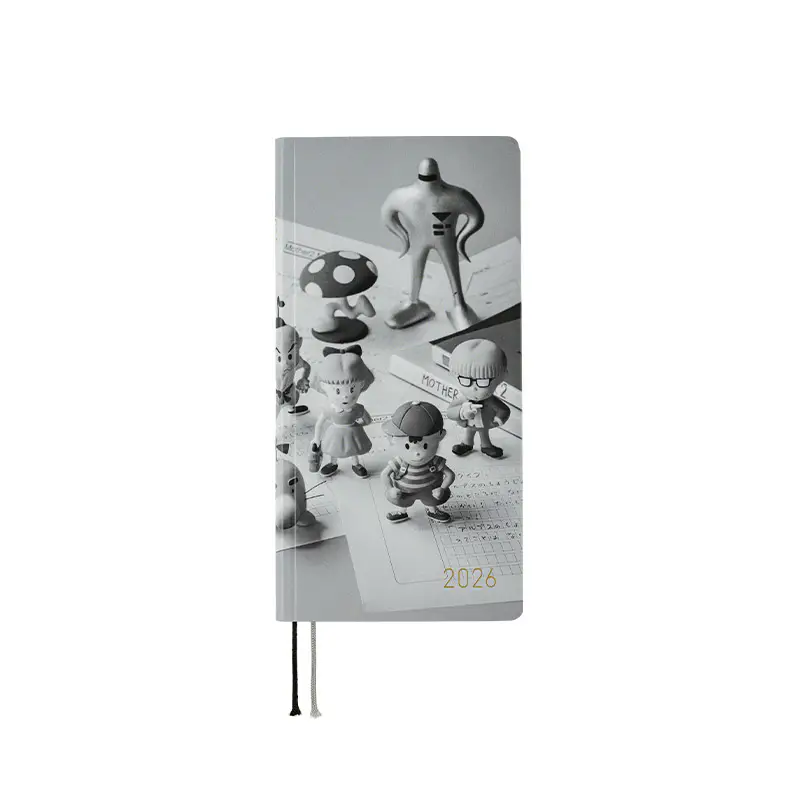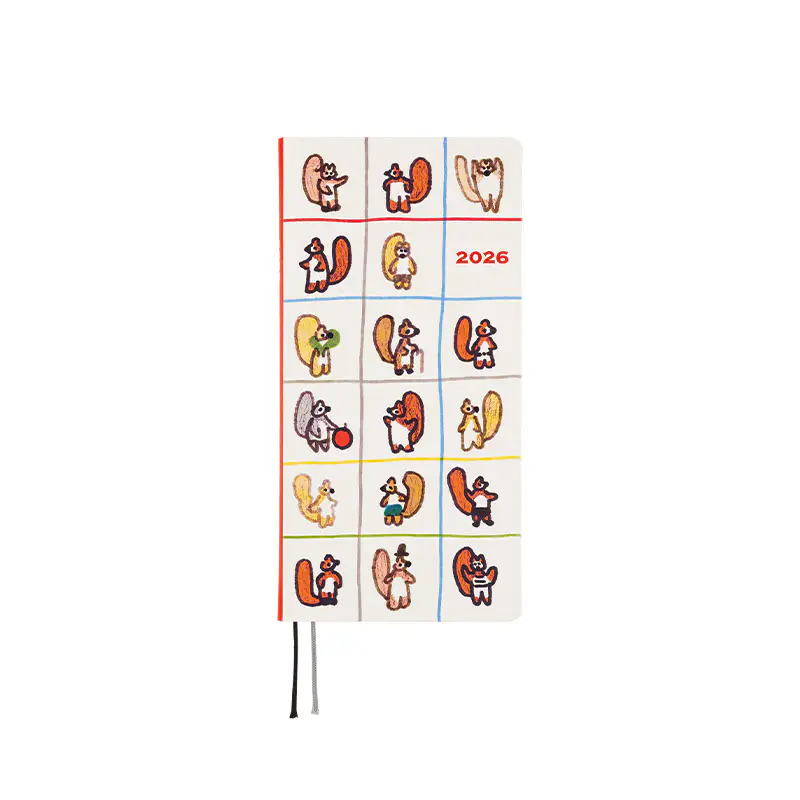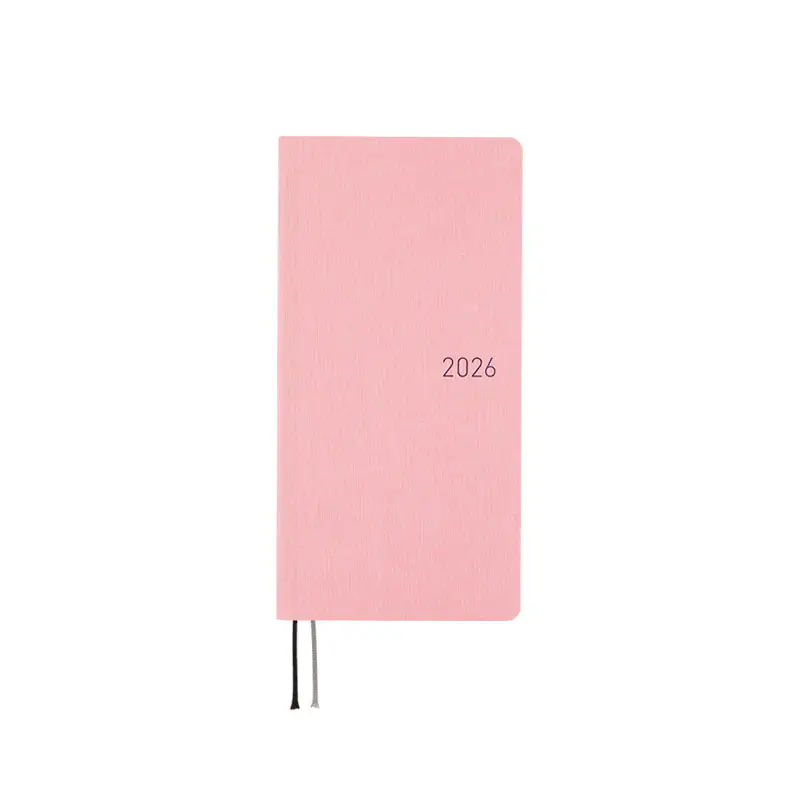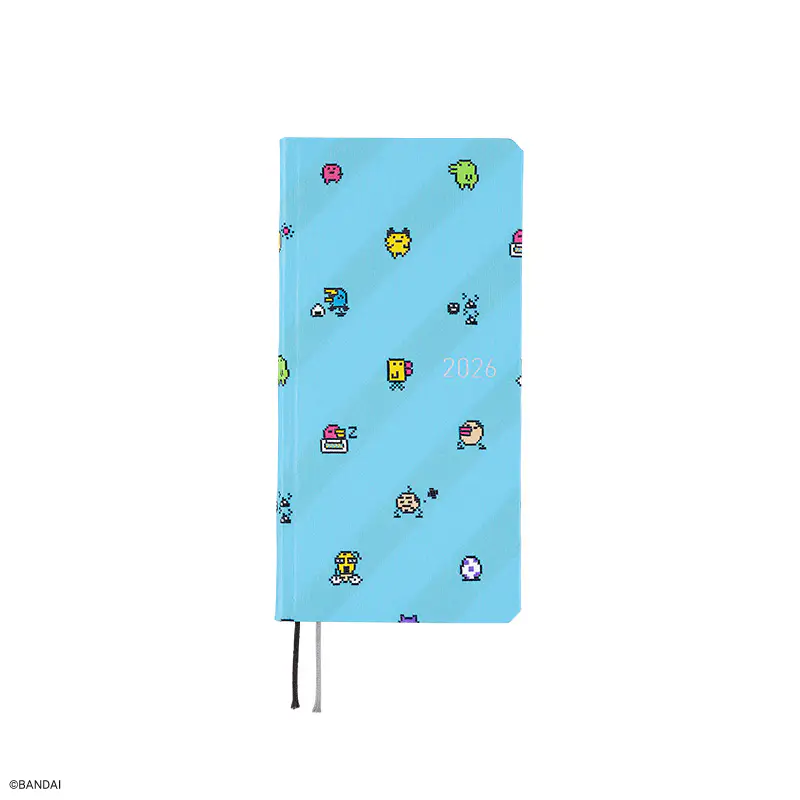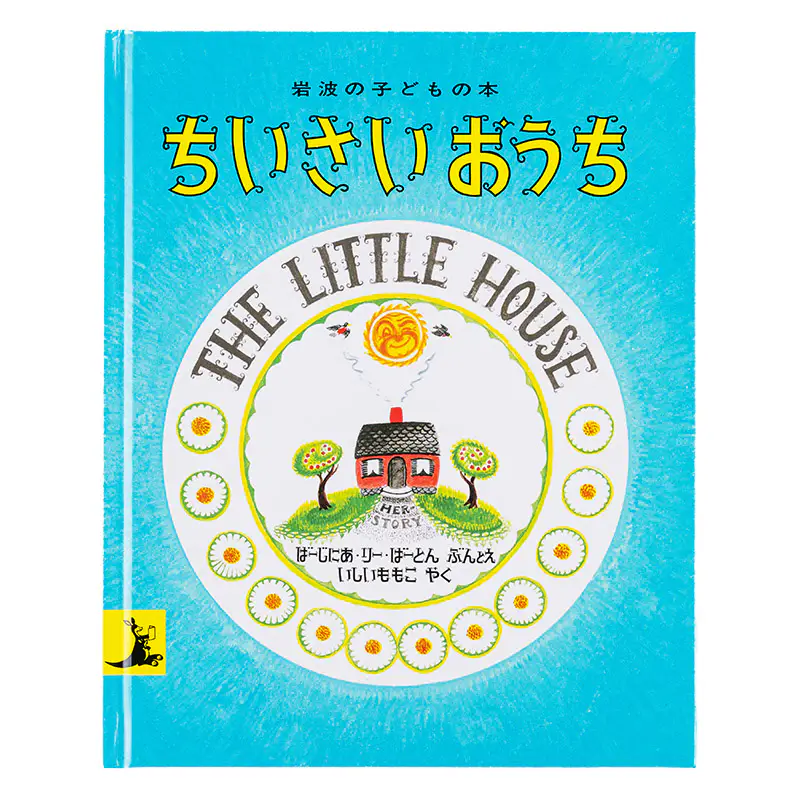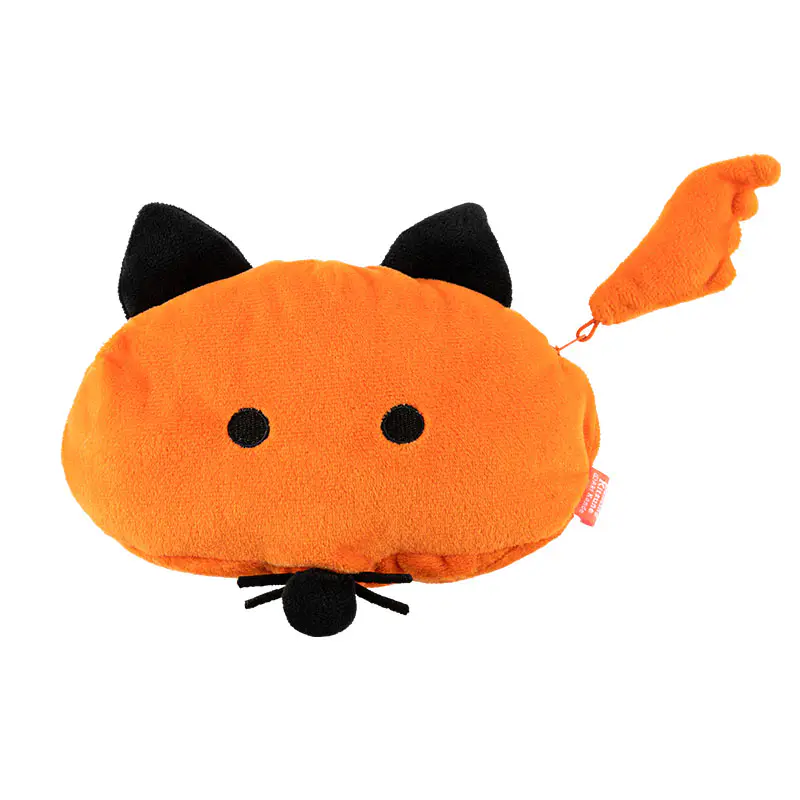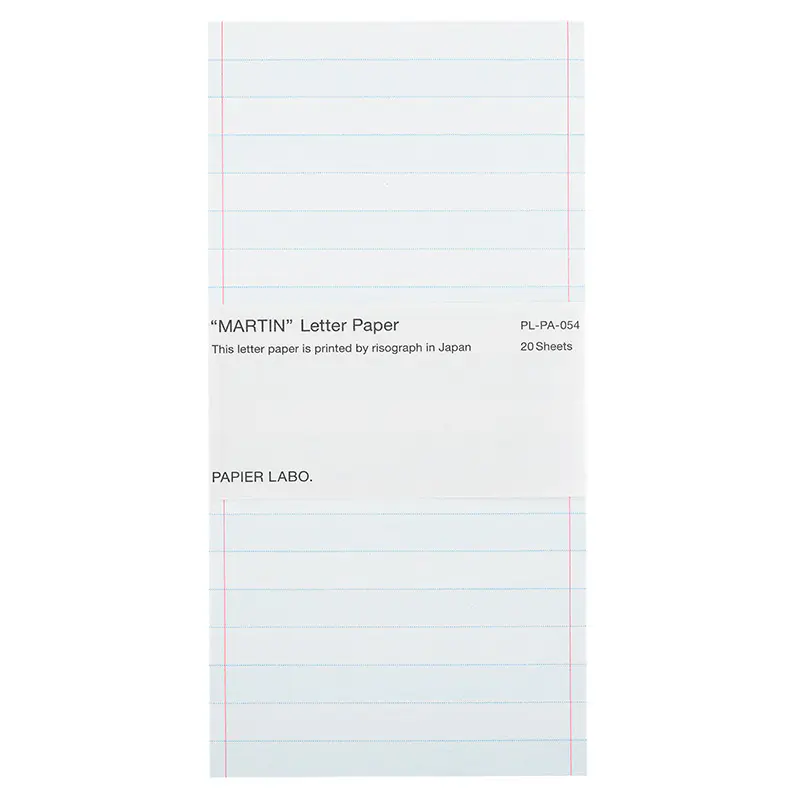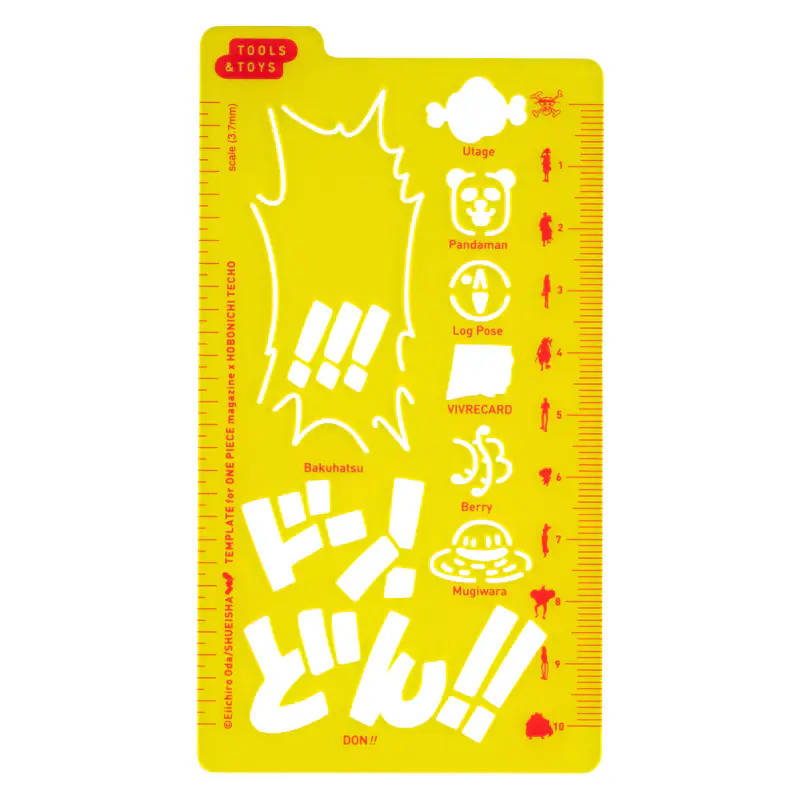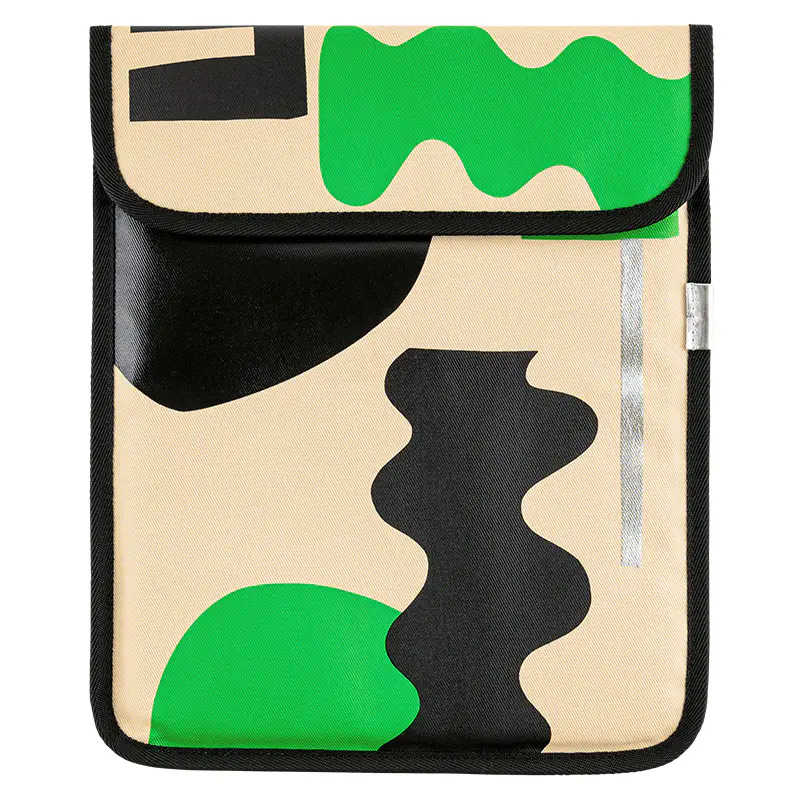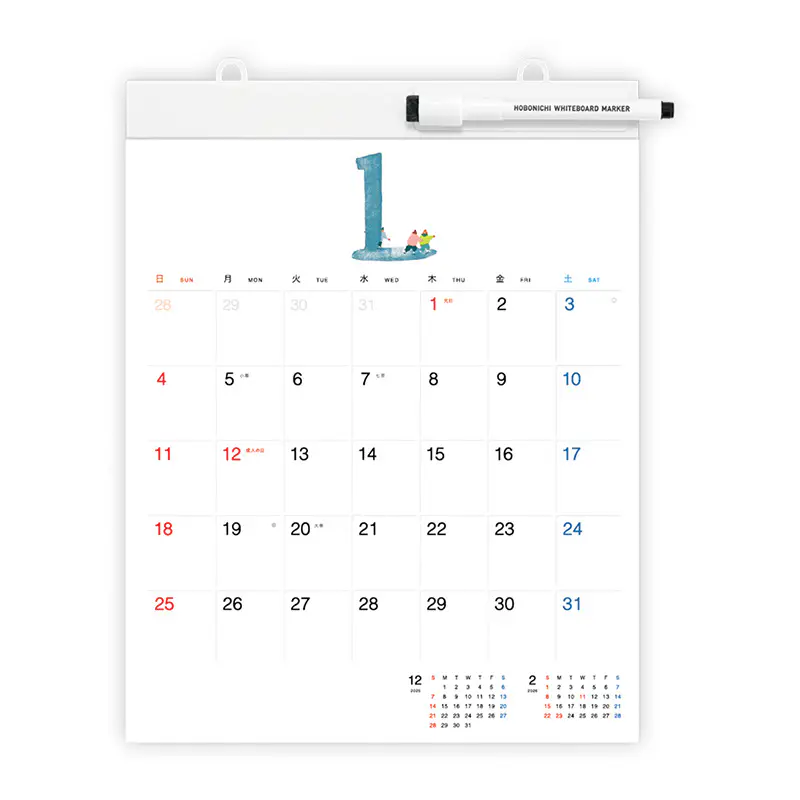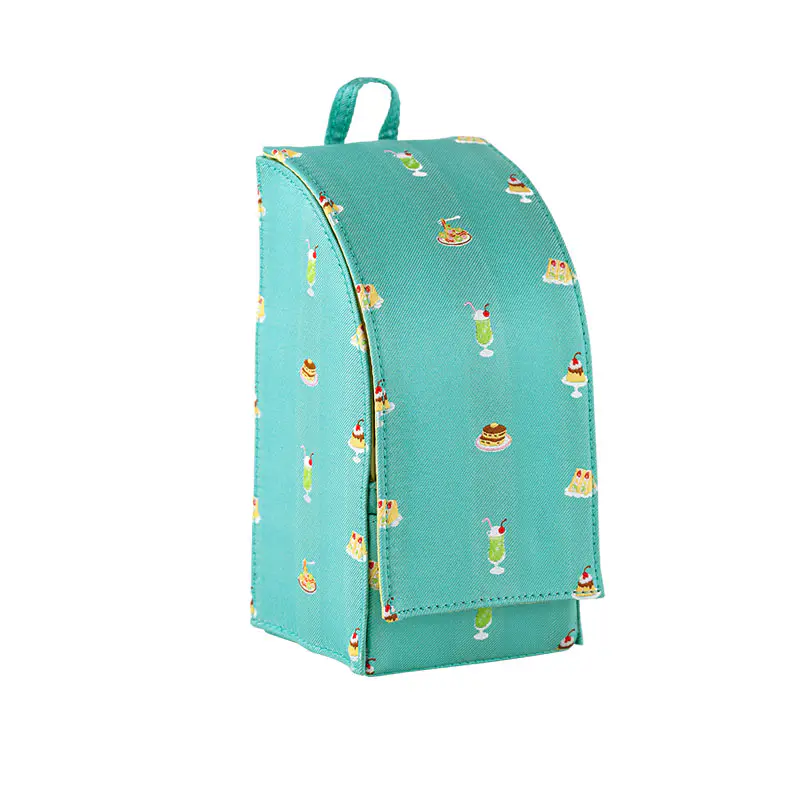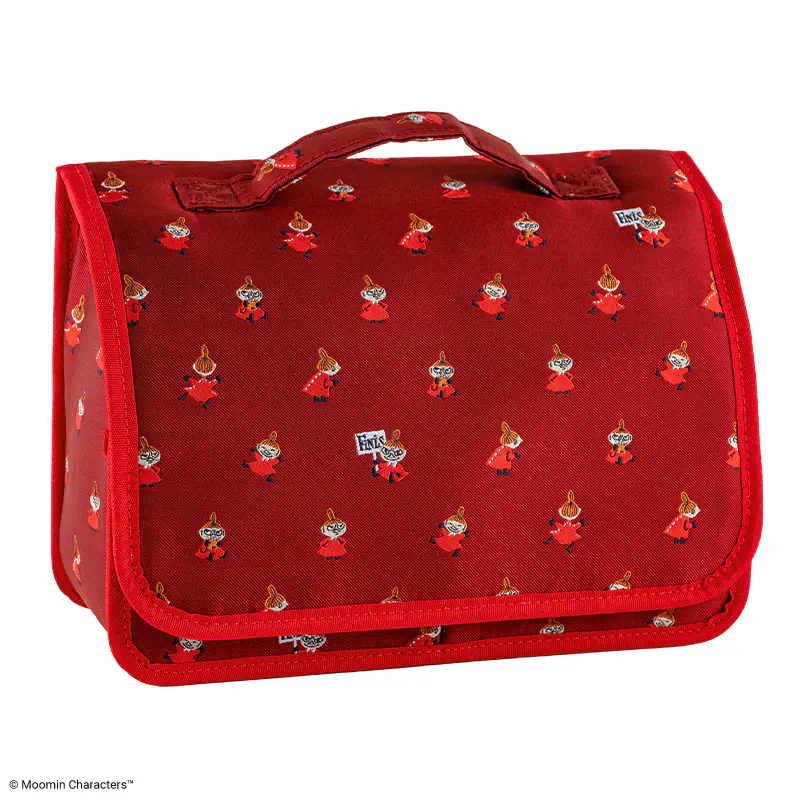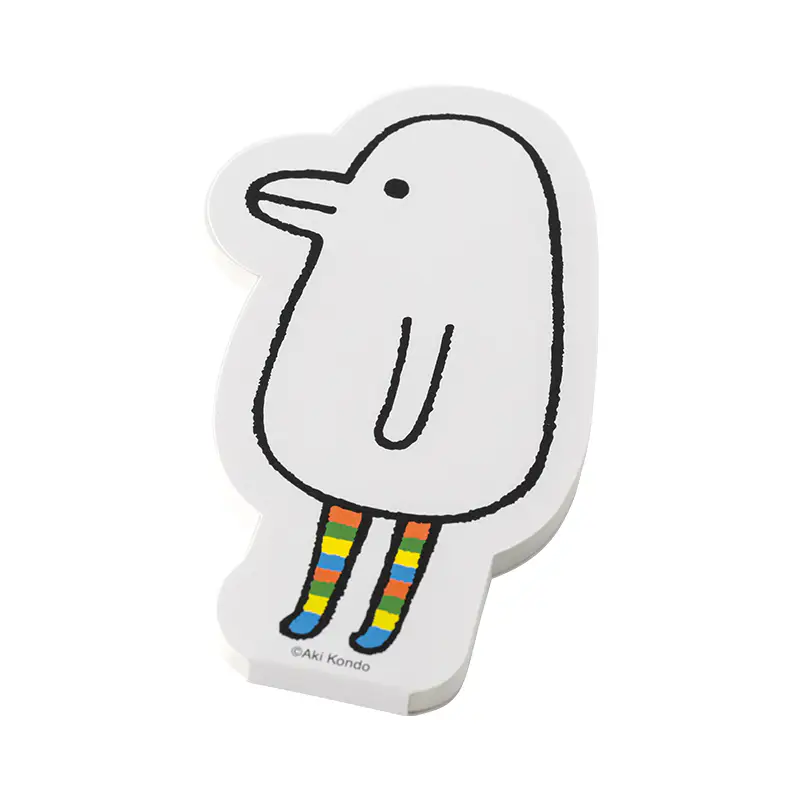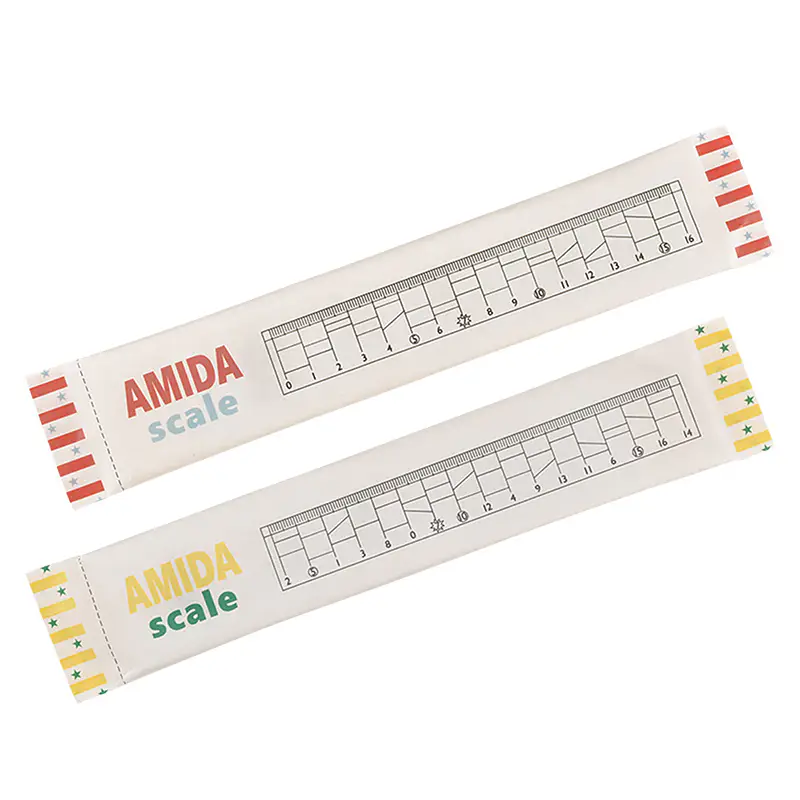Virginia Lee BurtonThe Little HouseWeeks Hardcover Book / Weekly Horizontal / ENG or JPN edition / Jan start / Mon start
- 2026 New
The children’s book The Little House by American author Virginia Lee Burton is now available on a Hobonichi Techo.
The charming little house, with pink walls and a red chimney on a gray roof, sits atop a hill in the quiet countryside alongside apple trees that change to reflect each season.
But over time, the horse buggies change to automobiles, the area around the house develops with train tracks and skyscrapers, and crowds of people hurry throughout the town. The book has been a long-beloved children’s book since being published many decades ago.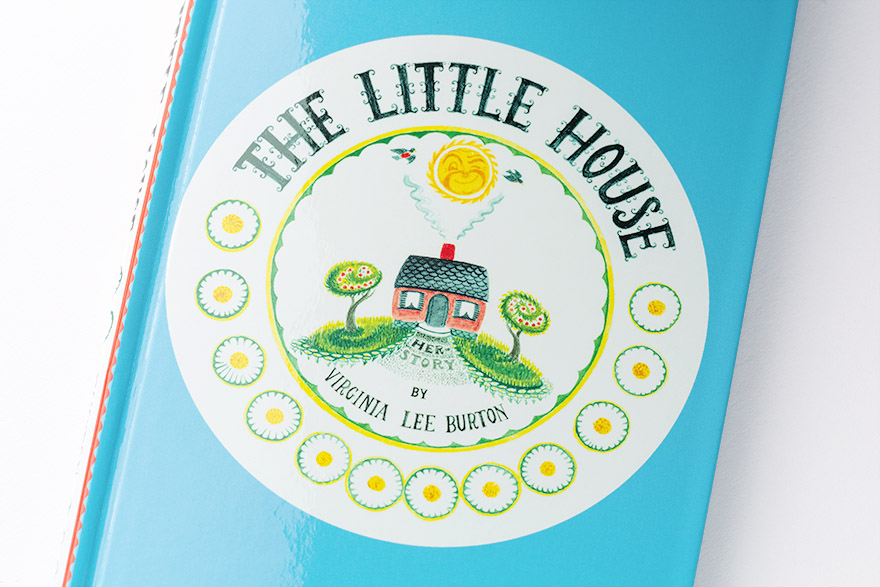
The front replicates the front cover of the original book, with its distinct shade of sky blue. The handwritten words add to the warmth and appeal of the design. The cover has a glossy finish to evoke the image of a hardcover children’s book.
The back of the cover depicts a smiling sun that had been on the back cover of the original book. The design around the sun simultaneously looks like warm rays of light and a daisy like the ones blooming around the little house.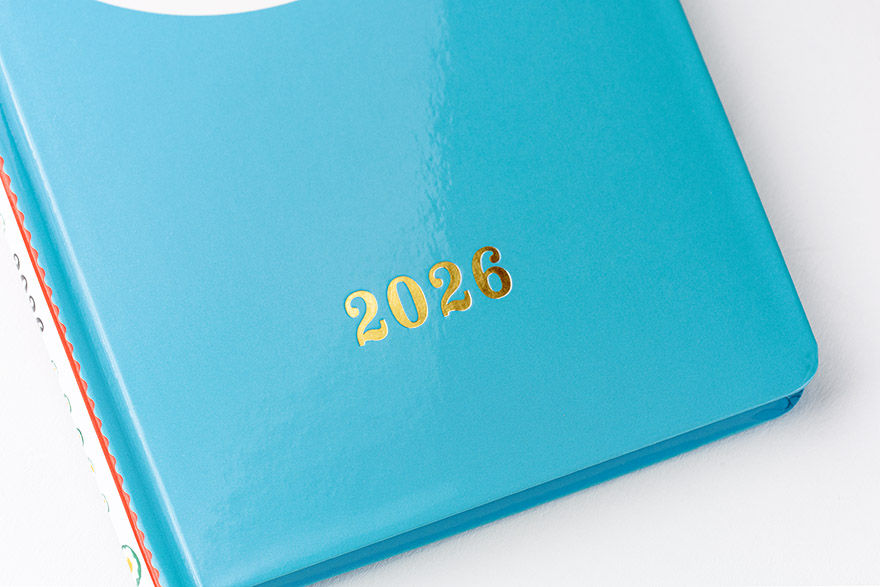
The year 2026 is foil-pressed in gold in a classic font.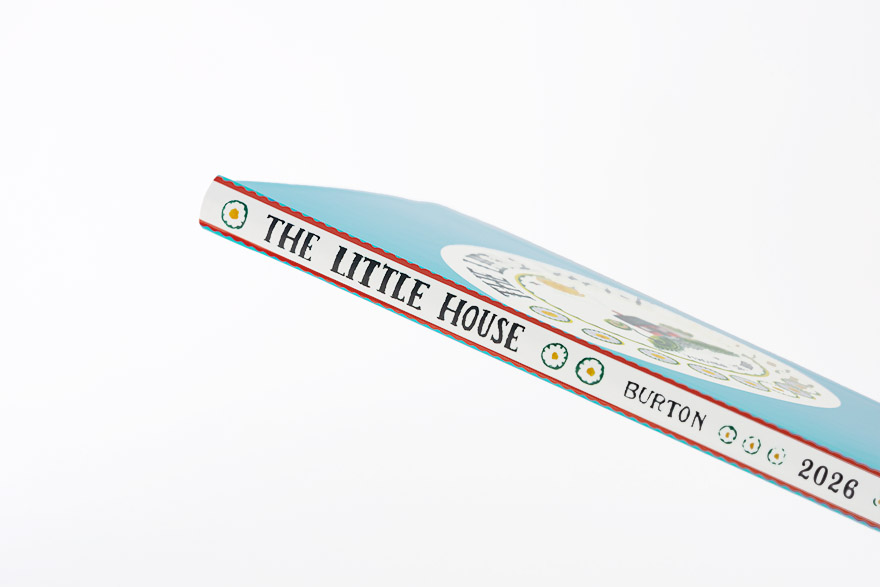
The cover spine is designed after the spine of the original book, with handwritten letters and daisies on a white background and red wavy lines along the edges.
The story of The Little House is a perfect fit for the Hobonichi Techo, as the book reminds us of the beauty of morning and night, and of the four rich seasons of spring, summer, autumn, and winter. We hope this techo fills you with the same warmth as the original book.

When you order this Hobonichi Techo Weeks, you’ll receive a clear, adhesive corner pocket you can stick anywhere you like.
The book uses thin and light yet durable Tomoe River paper. It's characterized by its ability to hold ink well and provide a smooth writing experience.
The Weeks book has space for writing in plans or journal entries, and it also has 71 pages of grid paper memo pages in the back (75 pages in the English edition). The back of the book contains bonus pages, including Memories 2026 and 12 Switches to Help You Focus.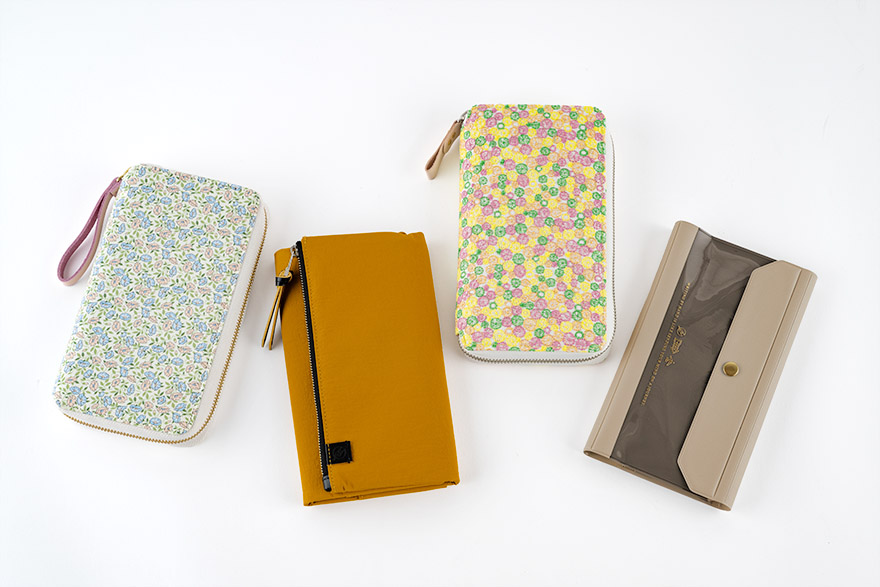
If you’d like storage space or a way to change up the look of your Weeks book, you can customize your book by pairing it with a Weeks cover.
See Weeks cover lineup
About Virginia Lee Burton
Virginia Lee Burton was born in Massachusetts, USA. She was a celebrated
children's book author and illustrator, and a textile designer, based in the small town of Gloucester, Massachusetts, a short drive from Boston; She resided with her family in the village of Folly Cove. Her book, The Little House, published in 1942, won the Caldecott Medal, a prize awarded annually to the most distinguished American picture book. She published many other renowned picture books, including Choo Choo, Mike Mulligan and his Steam Shovel, and Katy and the Big Snow. She was also active in the textile and graphic industry.
© 2025 VLB Rights Holder
Introduction to the Virginia Lee Burton series products
(Hobonichi Techo 2026 lineup)
Staff List
- Photographer
- Styled Images: Nobuki Kawaharazaki / Product Detail: Hiroyuki Oe
- Stylist
- Satomi Kamino
- Makeup & Hair
- Yuka Takamatsu
- Model
- Nico Ando (Image)
Discover more (Techo)
![]()
- ¥8,910 - ¥10,560
- ¥5,390
![]()
- ¥3,520 - ¥4,070
![]()
- ¥5,500 - ¥6,050
![]()
- ¥6,710 - ¥7,700
- ¥4,290
![]()
- ¥3,190 - ¥3,300
![]()
- ¥2,860 - ¥2,970
![]()
- ¥2,860 - ¥2,970
![]()
- ¥3,190 - ¥3,300
![]()
- ¥3,190 - ¥3,300
![]()
- ¥3,190 - ¥3,300
![]()
- ¥2,860 - ¥2,970
![]()
- ¥3,190 - ¥3,300
Discover more (Accessories)
![]()
- ¥880
![]()
- ¥720
![]()
- ¥2,860
![]()
- ¥550
![]()
- ¥720
![]()
- ¥8,800
![]()
- ¥720
![]()
- ¥2,530
![]()
- ¥2,750
![]()
- ¥4,400
![]()
- ¥770
![]()
- ¥1,430
Specifications*Specifications may vary slightly
Size H: 188 x W: 94 x T: 11 mm / H: 7.4" x W: 3.7" x T: 0.4" Weight Approx. 135 g Main material Glossy paper (PP coated) / Paper Compatible Techo Covers
- Weeks Book (English / January Start)
Language English Pages 240 pages Paper Type / Binding Thin, light Tomoe River paper that is smooth to write on and designed for planners / Stitch-binding Graph Paper Size 3.55 mm
*Monthly calendar pages are 3.4 mmStart of Week Monday-start week Yearly Calendar 2025, 2026, 2027 Yearly Index Jan. - Dec. 2026 (2 pages) Monthly Calendar Dec. 2025 - Mar. 2027 (32 pages) Daily Quotes One per week (English) Weekly Pages Dec. 1, 2025 - Jan. 3, 2027 (114 pages)
*All weekly pages include quotes.Graph Paper 75 pages Bonus Pages Useful Abbreviations / Using Things around You to Measure Size / Favorites / My 100 / Memories 2026 / 12 Switches to Help You Focus / 365 Days Check-Off Sheet / Addresses / Personal Notes Listed Information Week of the year / Moon phase (weekly pages include every phase, monthly calendars only include full and new moon) Other See the Exploring Each Type page for more details
- Weeks Book (Japanese / January Start)
Language Japanese Pages 240 pages Paper Type / Binding Thin, light Tomoe River paper that is smooth to write on and designed for planners / Stitch-binding Graph Paper Size 3.55 mm
*Monthly calendar pages are 3.4 mmStart of Week Monday-start week Yearly Calendar 2025, 2026, 2027 Yearly Index Jan. - Dec. 2026 (2 pages) Monthly Calendar Dec. 2025 - Mar. 2027 (32 pages) Daily Quotes One per week (Japanese) Weekly Pages Dec. 1, 2025 - Jan. 3, 2027 (114 pages)
*All weekly pages include quotes.Graph Paper 71 pages Bonus Pages 365 Days Check-Off Sheet / Using Things around You to Measure Size / My 100 / Memories 2026 / 12 Switches to Help You Focus / Solar Terms / Emergency Preparedness / Age Table / Conversion Chart / Getting the most of Hobonichi / Contact List / Personal Notes Listed Information Week of the year / Rokuyo (traditional Japanese calendar) / Solar terms / Japanese holidays / Moon phase (weekly pages include every phase, monthly calendars only include full and new moon) Other See the Exploring Each Type page for more details
User recommendations
If you’ve used any of these products, we welcome your notes on what you like about them or what led you to buy them so we can share it with customers who are currently considering these products. We’d also love to welcome comments from customers who purchased their techo outside the Hobonichi Store or received their book as a gift.
Please Read Before You Buy
We’ve compiled a list of warnings, potential issues, and tips to keep in mind for this particular product. Additionally, the color of the product may be slightly different in actuality than compared to how it appeared on a computer or smartphone screen.
- Press marks or shines may appear on the corners
You may notice press marks, slight whitening, or a glossy finish on the corners of the front and back covers. These are unavoidable results of the binding process.
- About the paper used (techo)
The Tomoe River paper designed for planners is known for its thinness and smooth writing surface. However, depending on the type and amount of ink or pen used—as well as environmental conditions—some ink may bleed through or take longer to dry. We recommend testing your pens on an inconspicuous area first, or using a pencil board or blotting paper for best results.
